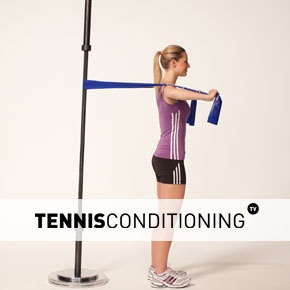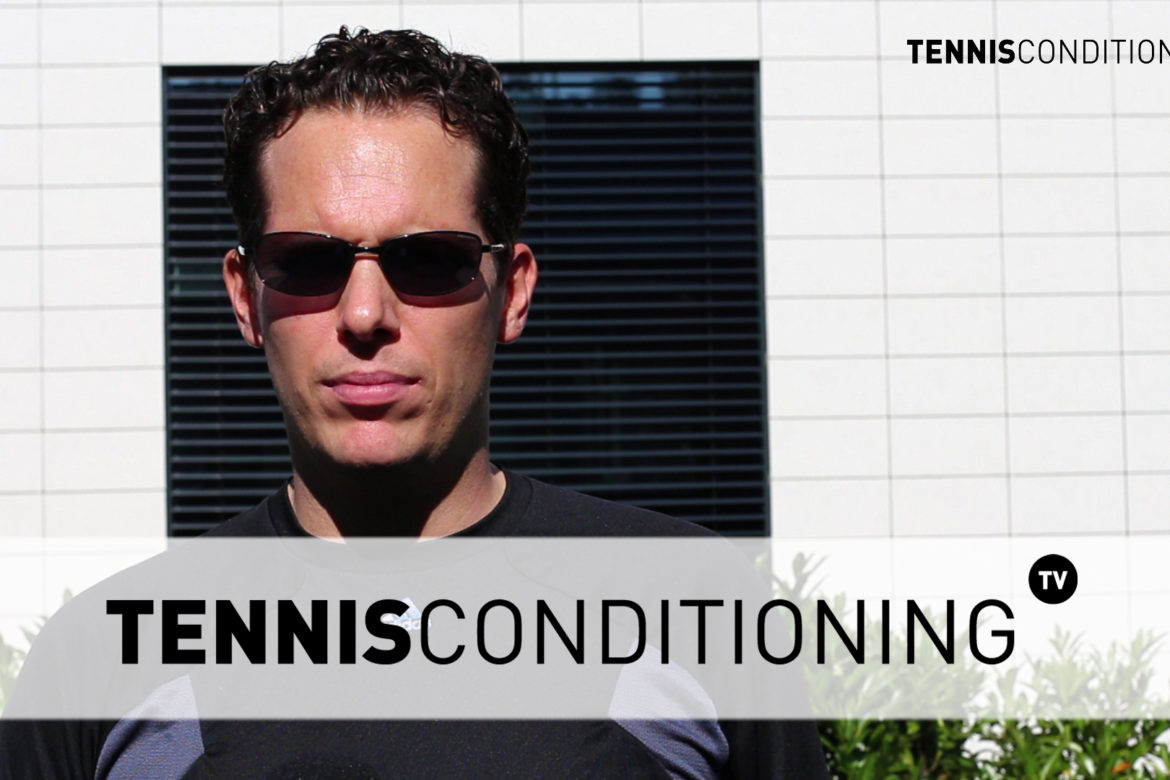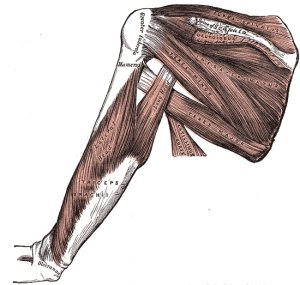I’ll be talking about rotator cuff injuries and non-surgical treatment options since many tennis players encounter shoulder problems throughout their career.
Sometimes the shoulder pain can become so severe that you have to end your career prematurely. Keep reading and find out more about:
- Structural aspects of the shoulder
- Common rotator cuff injuries and how they can occur
- Sign & symptoms of rotator cuff injuries
- Non-surgical treatment options
- Exercise recommendations
Structural Aspects of the Shoulder
The shoulder joint, also called glenohumeral joint, is a multiaxial, ball & socket joint (diarthrodial joint) that has the greatest movement capabilities of all joints in the body.
Because of its superior movement capabilities it lacks stability. Stability is sacrificed to enhance mobility.
Even though it is a ball-and-socket joint, the glenoid fossa, the socket portion, is relatively shallow and the ligaments are lax within normal movement ranges.
Therefore, other structures are needed to keep the humeral head, the “ball” portion of the shoulder in place.
Structures Supporting The Shoulder
The structures that contribute to stabilize the humeral head are cartilages, ligaments, muscles and tendons of the rotator cuff musculature.
Muscles supporting the shoulder, the rotator cuff muscles, are:
- supraspinatus
- infraspinatus
- teres minor
- subscapularis
Common Rotator Cuff Injuries and How They Can Occur
The most common injuries are shoulder dislocations and tears or inflammation to the tendons of the rotator cuff muscles.
Shoulder pain is generally caused via impingement or tendinitis. More specifically, scapula impingement (acromion) or inflammation of rotator cuff tendons caused by micro tears.
The rotator cuff muscles are small compared to the deltoid or bicep and hence require adequate strength and endurance to ensure proper functioning of the entire shoulder joint.
Due to prolonged and repetitious activities, especially overhead movement like serving, the small rotator cuff muscles cannot maintain dynamic stability due to muscle fatigue and other factors such as:
- muscular imbalances (agonist stronger than antagonist)
- poor technique
- inadequate warm-up, strengthening, and stretching
All these aforementioned factors can lead to rotator cuff tendinitis or rotator cuff impingement.
Signs & Symptoms of Rotator Cuff Injuries
Rotator cuff impingement or scapula impingement occurs due to pressure caused by the acromion when the arm is lifted.
When this happens the acromion rubs onto the surface of the rotator cuff, causing pain and limiting movement.
Sometimes, the bursa just over the rotator cuff can be inflamed and hence causing pain as well.
Generally, an individual suffering from rotator cuff injury will experience one of the following:
- Pain when shoulder is moving and/or at rest
- Stabbing pain when lifting or moving objects
- Pain center moving from the front to the side
Treatment Options For Rotator Cuff Injuries

A variety of rotator cuff treatment options are available, from surgical to non-surgical. Next we will provide some non-surgical options.
Non-Surgical
Initially, athletes are advised to stop any overhead activities, such as serving, and rest the shoulder for days or weeks.
Anti-Inflammatories: Drugs or Pineapple
Depending on the severity of the pain and anti inflammatory medication generally accompanies the rest period.
Alternatively you can also eat some pineapple since they also provide anti-inflammatory effects.
Cortisone Shots
If pain is more severe, cortisone shots (injections) can be applied to the affected area, such as the bursa, but that should be your last resort because cortisone shots can also have adverse effects.
Once the athlete is pain-free a physical rehabilitation or strengthening program is incorporated regularly. Often times in the form of a dynamic warm up using elastic bands.
Physical Rehabilitation
Another option is a physical rehabilitation/strengthening program that would include resistance training exercises such as:
- Internal shoulder rotation
- External shoulder rotation
- Shoulder Abducted External Rotation
- Shoulder Abducted Internal Rotation
- Supraspinatus Lateral Raise
It’s a good idea to include the rotator cuff circuit into your dynamic tennis warm up routine that you perform before every tennis match or practice session.
This way you warm up and strengthen the rotator cuff muscles regularly.
Next, you also want to strengthen your muscles that are acting on your shoulder and shoulder girdle complex to avoid any future shoulder pain.
We have a great workout ready for you:
Surgical
When non-surgical treatments don’t relief the pain surgery might be the last option to create more space for the rotator cuff. That removes any impingement of the rotator cuff caused by the acromion of the scapula.
Two common surgical procedures used are subacromial decompression or anterior acromioplasty.
During the surgery a piece of the acromion and/or parts of the bursa are being removed either via open incision or arthroscopic procedure.
After surgery, a sling is used to remove pressure from the shoulder, speeding up the recovery process.
Once the pain subsides, the individual starts a physical rehabilitation program that aims at strengthening the rotator cuff muscles while ensuring proper functional range of motion.
Recovery from surgery and return to full range of motion can take anywhere between 2 – 12 month.
Picture Credit
“Gray412“. Licensed under Public Domain via Wikimedia Commons.


